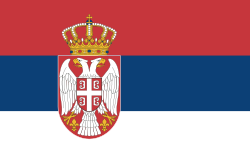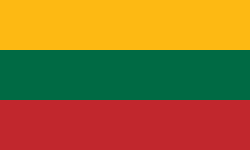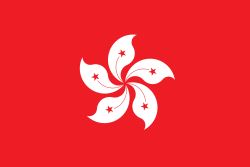Australian Open 2016 – dvouhra juniorů
| Australian Open 2016 | |
|---|---|
| Vítěz: | |
| Finalista: | |
| Výsledek: | 6–2, 1–6, 6–1 |
| Soutěže | |
| mužská dvouhra (q) • mužská čtyřhra | |
| ženská dvouhra (q) • ženská čtyřhra | |
| smíšená čtyřhra | |
| dvouhra juniorů • čtyřhra juniorů | |
| dvouhra juniorek • čtyřhra juniorek | |
| dvouhra vozíčkářů • dvouhra vozíčkářek | |
| čtyřhra vozíčkářů • čtyřhra vozíčkářek | |
| dvouhra kvadruplegiků • čtyřhra kvadruplegiků | |
| mužské legendy • ženské legendy | |
| Australian Open dvouhra juniorů | |
| 2015 ◄◄ 2016 ►► 2017 | |
| Grand Slam 2016 dvouhra juniorů | |
| Australian Open • French Open Wimbledon • US Open | |
Do soutěže dvouhry juniorů na melbourneském Australian Open 2016 nastoupilo šedesát čtyři hráčů. Obhájcem titulu byl ruský tenista Roman Safiullin, který již do průběhu nemohl zasáhnout pro věkové omezení.
Vítězem se stal 17letý Australan Oliver Anderson, startující na divokou kartu, který ve finále zdolal sedmého nasazeného Uzbeka Džurabeka Karimova po třísetovém průběhu 6–2, 1–6 a 6–1. Připsal si tak premiérový grandslamový titul kariéry a do juniorského kombinovaného žebříčku ITF získal 375 bodů.
Nasazení hráčů
- 1.
 Máté Valkusz (3. kolo)
Máté Valkusz (3. kolo)- 2.
 Miomir Kecmanović (3. kolo)
Miomir Kecmanović (3. kolo)- 3.
 Stefanos Tsitsipas (čtvrtfinále)
Stefanos Tsitsipas (čtvrtfinále)- 4.
 Félix Auger-Aliassime (3. kolo)
Félix Auger-Aliassime (3. kolo)- 5.
 Čchong Jun-song (semifinále)
Čchong Jun-song (semifinále)- 6.
 Alex De Minaur (semifinále)
Alex De Minaur (semifinále)- 7.
 Džurabek Karimov (finále)
Džurabek Karimov (finále)- 8.
 Ulises Blanch (2. kolo)
Ulises Blanch (2. kolo)- 9.
 Jay Clarke (1. kolo)
Jay Clarke (1. kolo)- 10.
 Alberto Lim (1. kolo)
Alberto Lim (1. kolo)- 11.
 Genaro Alberto Olivieri (2. kolo)
Genaro Alberto Olivieri (2. kolo)- 12.
 Youssef Hossam (3. kolo)
Youssef Hossam (3. kolo)- 13.
 Josuke Watanuki (čtvrtfinále)
Josuke Watanuki (čtvrtfinále)- 14.
 Ugo Humbert (2. kolo)
Ugo Humbert (2. kolo)- 15.
 Kenneth Raisma (čtvrtfinále)
Kenneth Raisma (čtvrtfinále)- 16.
 Wu I-ping (1. kolo)
Wu I-ping (1. kolo) - 2.
Pavouk
| Legenda | ||
|
|
|
Finálová fáze
| Čtvrtfinále | Semifinále | Finále | |||||||||||||||||
| WC | | 3 | 6 | 6 | |||||||||||||||
| WC | | 6 | 4 | 4 | |||||||||||||||
| WC | | 6 | 7 | ||||||||||||||||
| 5 | | 3 | 5 | ||||||||||||||||
| 15 | | 3 | 4 | ||||||||||||||||
| 5 | | 6 | 6 | ||||||||||||||||
| WC | | 6 | 1 | 6 | |||||||||||||||
| 7 | | 2 | 6 | 1 | |||||||||||||||
| 6 | | 63 | 7 | 6 | |||||||||||||||
| 3 | | 77 | 5 | 0 | |||||||||||||||
| 6 | | 6 | 4 | 3 | |||||||||||||||
| 7 | | 3 | 6 | 6 | |||||||||||||||
| 7 | | 6 | 6 | ||||||||||||||||
| 13 | | 3 | 2 | ||||||||||||||||
Horní polovina
1. sekce
2. sekce
| První kolo | Druhé kolo | Třetí kolo | Čtvrtfinále | ||||||||||||||||||||||
| 4 | | 6 | 6 | ||||||||||||||||||||||
| Q | | 4 | 4 | 4 | | 6 | 6 | ||||||||||||||||||
| WC | | 4 | 6 | 7 | WC | | 2 | 1 | |||||||||||||||||
| | 6 | 3 | 5 | 4 | | 3 | 1 | ||||||||||||||||||
| WC | | 2 | 2 | 15 | | 6 | 6 | ||||||||||||||||||
| | 6 | 6 | | 5 | 2 | ||||||||||||||||||||
| | 4 | 6 | 4 | 15 | | 7 | 6 | ||||||||||||||||||
| 15 | | 6 | 3 | 6 | 15 | | 3 | 4 | |||||||||||||||||
| 11 | | 77 | 6 | 5 | | 6 | 6 | ||||||||||||||||||
| | 61 | 4 | 11 | | 4 | 65 | |||||||||||||||||||
| WC | | 2 | 4 | | 6 | 77 | |||||||||||||||||||
| | 6 | 6 | | 3 | 0r | ||||||||||||||||||||
| | 6 | 6 | 5 | | 6 | 1 | |||||||||||||||||||
| Q | | 2 | 4 | | 7 | 4 | 7 | ||||||||||||||||||
| | 3 | 2 | 5 | | 5 | 6 | 9 | ||||||||||||||||||
| 5 | | 6 | 6 | ||||||||||||||||||||||
Dolní polovina
3. sekce
4. sekce
Odkazy
Reference
V tomto článku byl použit překlad textu z článku 2016 Australian Open – Boy's Singles na anglické Wikipedii.
Externí odkazy
- Dvouhra juniorů na Australian Open 2016 [online]. Australian Open [cit. 2016-02-01]. Dostupné v archivu pořízeném dne 20-02-2014. (anglicky)
- Juniorský turnaj Australian Open 2016 [online]. Mezinárodní tenisová federace [cit. 2016-02-01]. Dostupné v archivu pořízeném dne 27-01-2016. (anglicky)
Média použitá na této stránce
Flag of Australia, when congruence with this colour chart is required (i.e. when a "less bright" version is needed).
See Flag of Australia.svg for main file information.Flag of Canada introduced in 1965, using Pantone colors. This design replaced the Canadian Red Ensign design.
This is the national flag of Belgium, according to the Official Guide to Belgian Protocol. It has a 13:15 aspect ratio, though it is rarely seen in this ratio.
Its colours are defined as Pantone black, Pantone yellow 115, and Pantone red 032; also given as CMYK 0,0,0,100; 0,8.5,79,0; and 0,94,87,0.Chinese Taipei Olympic Flag. According to the official website of Chinese Taipei Olympic Committee, Blue Sky(circle) & White Sun(triangles) above the Olympic rings is neither the National Emblem of the Republic of China, nor the Party Emblem of Kuomintang (KMT), but a design in between, where the triangles do not extend to the edge of the blue circle, as registered at International Olympic Committee in 1981 and digitally rendered in 2013. Besides, the blue outline of the five-petaled plum blossom is broader than the red one. Moreover, the CMYK code of the blue one and the Blue Sky & White Sun is "C100-M100-Y0-K0", and different from the Olympic rings (C100-M25-Y0-K0). Note that it's the only version recognized by IOC.
Vlajka České republiky. Podoba státní vlajky České republiky je definována zákonem České národní rady č. 3/1993 Sb., o státních symbolech České republiky, přijatým 17. prosince 1992 a který nabyl účinnosti 1. ledna 1993, kdy rozdělením České a Slovenské Federativní republiky vznikla samostatná Česká republika. Vlajka je popsána v § 4 takto: „Státní vlajka České republiky se skládá z horního pruhu bílého a dolního pruhu červeného, mezi něž je vsunut žerďový modrý klín do poloviny délky vlajky. Poměr šířky k její délce je 2 : 3.“
The national flag of Kingdom of Thailand; there are total of 3 colours:
- Red represents the blood spilt to protect Thailand’s independence and often more simply described as representing the nation.
- White represents the religion of Buddhism, the predominant religion of the nation
- Blue represents the monarchy of the nation, which is recognised as the centre of Thai hearts.






























